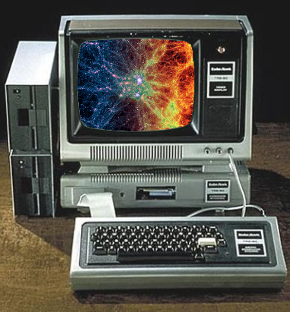Universe rewound in model's modal shift
 After five years of development and three months running on 8000 processors – an advanced model of our universe and its evolution has been rendered.
After five years of development and three months running on 8000 processors – an advanced model of our universe and its evolution has been rendered.
The Illustris program has announced its latest iteration, which is the result of years spent tweaking and enhancing computer physics models for nearly every aspect of galactic mechanics.
The model includes known visible matter organised in its web of sheets, filaments, and voids, inside which the basic units of cosmic structure - galaxies - are embedded.
But the simulation goes deeper still, with gravity and hydrodynamics factored-in, and chemical processes such as diffusion of gas, radiation, and magnetic fields affecting cosmic structure formation.
In Illustris, a huge set of physical processes like star-formation-driven galactic winds, and black hole thermal energy injection, are modelled throughout cosmic history.
A number of advanced techniques were employed in the latest version of the glimpse into the universal past, including new particle dynamic algorithms for modelling gas in space,
There are a number of exciting results from the program’s recent achievements.
Illustris has successfully reproduced a wide range of observable properties of galaxies and the relationships between them. It has precisely measured the gas content of the universe, and where it resides.
The program has also helped investigate the existence of “satellite” galaxies, their properties, and their connection to cosmology, and the changes in internal structure as galaxy populations evolve in time.
More details, videos, and reports are available from the official Illustris site.








 Print
Print